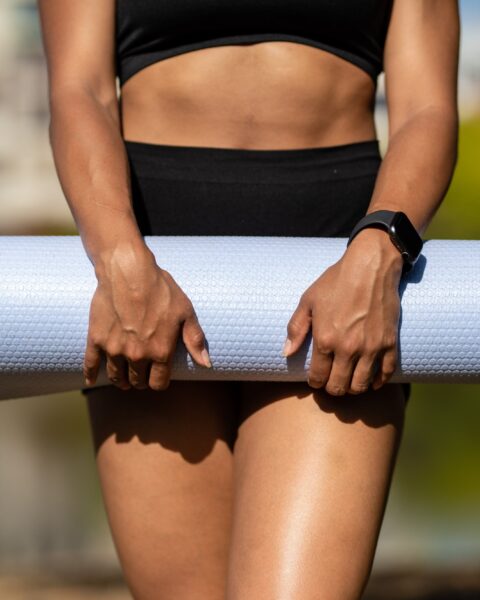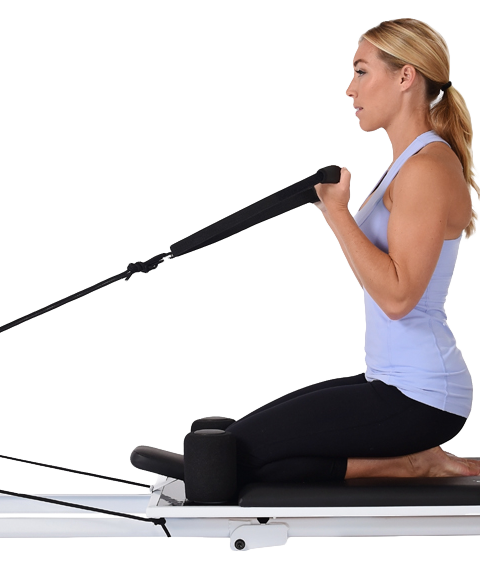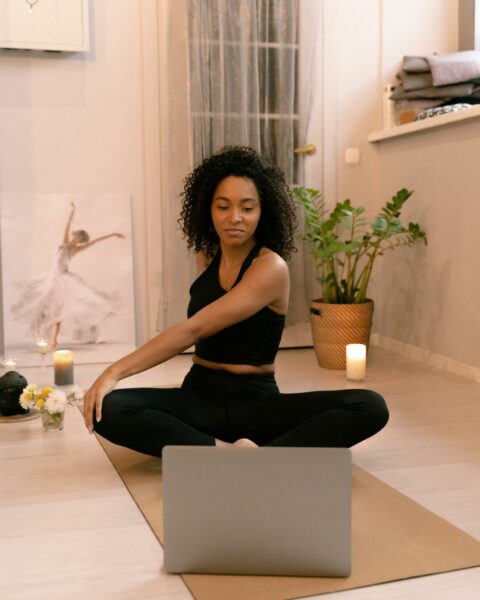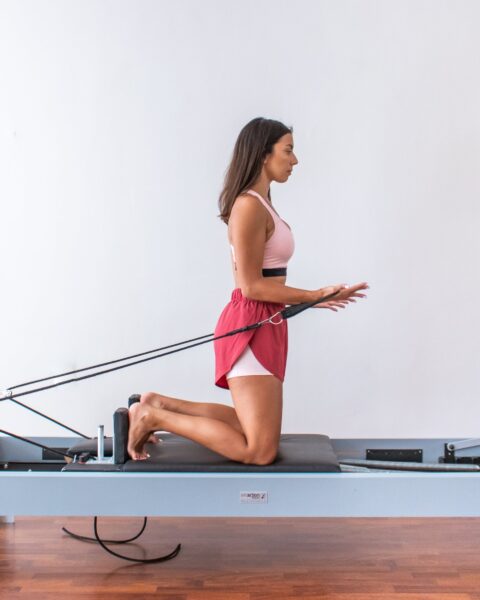In this post, we will delve into the science behind Pilates and its impact on muscle growth. We will also compare Pilates with other forms of exercise, explore the benefits and limitations of Pilates for muscle building and provide you with practical tips to maximize muscle building in your Pilates practice.
Can Pilates Build Muscles?
Understanding Pilates: An Overview
Pilates is a form of exercise that was developed in the early 20th century by Joseph Pilates. It is a mind-body exercise method that emphasizes core strength, flexibility, and overall body awareness. Pilates is known for its focus on controlled movements, proper alignment, and breath control.
At its core, Pilates aims to improve the strength, stability, and flexibility of the body through a series of exercises that target specific muscle groups. The exercises in Pilates are typically performed on a mat or using specialized equipment, such as the Reformer or Cadillac.
One of the distinguishing features of Pilates is its emphasis on the “Powerhouse,” which refers to the core muscles, including the abdominals, back, and pelvic floor. These muscles are considered the foundation of all movement in Pilates and are key to developing strength and stability throughout the body.
The Science Behind Pilates and Muscle Building
Pilates may not be commonly considered to build muscle, as it is often perceived as a low-impact and gentle form of exercise. However, there is scientific evidence to support the idea that Pilates can indeed contribute to muscle development.
Can Pilates Build Muscle?
Yes, it can. Pilates is designed to engage and activate multiple muscle groups simultaneously. The controlled and precise movements in Pilates require muscle engagement throughout the entire range of motion. This continuous activation of muscles leads to muscle fatigue and ultimately stimulates muscle growth.
The emphasis on core strength and stability means that the muscles of the abdomen, back, hips, and pelvis are constantly being challenged and strengthened. Additionally, the exercises incorporate movements that target the upper and lower body, including the arms, legs, and glutes.
The Role of Resistance in Pilates
Resistance plays a crucial role in muscle building, and Pilates incorporates various forms of resistance to promote muscle development. While traditional strength training often relies on external weights or equipment, Pilates uses different types of resistance, such as springs, bands, and body weight.
Pilates equipment, like the Reformer, offers adjustable resistance through the use of springs. By adjusting the tension, individuals can progressively increase the resistance as their strength improves. This allows for progressive overload, a key principle in muscle building.
Even in mat Pilates movements, the body’s own weight is used as resistance. By performing movements against gravity and using proper alignment and control, individuals can effectively challenge their muscles and stimulate growth.
Muscle Groups Targeted by Pilates
Pilates is a whole-body exercise method, meaning that it targets multiple muscle groups throughout the body. Some of the specific muscle groups targeted in Pilates include:
- Abdominals: The deep abdominal muscles, including the rectus abdominis and transversus abdominis, are engaged in almost every Pilates exercise, providing stability and strength to the core.
- Back muscles: Pilates exercises promote a strong and flexible back by targeting the muscles of the upper, middle, and lower back, including the erector spinae and latissimus dorsi.
- Glutes: The gluteal muscles, including the gluteus maximus, medius, and minimus, are activated in various Pilates exercises, helping to improve hip stability and support overall body alignment.
- Legs and hips: Pilates incorporates movements that target the muscles of the thighs, such as the quadriceps and hamstrings, as well as the hip abductors and adductors.
- Arms and shoulders: Pilates exercises that involve the upper body, such as arm circles or push-ups, engage the muscles of the arms, shoulders, and upper back.
Comparing Pilates with Other Forms of Exercise for Muscle Building
When it comes to building muscles, there are various forms of exercise that individuals often turn to, such as weight training, yoga, and cardio workouts. In this section, we will compare Pilates with these popular exercise modalities to understand how Pilates measures up in terms of muscle building potential.
Pilates vs Weight Training (Strength Training)
Weight training is often seen as the go-to exercise for muscle building, as it involves lifting heavy weights to create resistance and stimulate muscle growth. While Pilates may not involve the same level of external resistance, it can still be effective in building muscles.
One key difference between Pilates and weight lifting is the focus on overall body conditioning in Pilates. Pilates aims to develop strength and stability throughout the entire body, with a particular emphasis on building strength in the core muscles. Weight lifting and other strength training, on the other hand, often involve targeted muscle isolation exercises.
A Pilates class, especially when performed on specialized equipment like the Reformer, offers adjustable resistance training that can be progressively increased as strength improves. This allows for continuous challenge and muscle growth. Additionally, the controlled and precise movements in Pilates help develop muscular control and endurance.
While weight training may provide faster and more noticeable muscle gains, Pilates offers a holistic approach to muscle building that promotes overall body strength, flexibility, and alignment.
Pilates vs Yoga
Yoga is a popular exercise modality known for its focus on flexibility, balance, and mind-body connection. While yoga and Pilates share some similarities, such as controlled movements and body awareness, they differ in their specific approaches to muscle building.
Yoga primarily focuses on elongating and stretching the muscles, promoting flexibility and joint mobility. While certain yoga poses can engage and strengthen muscles, the primary goal is not muscle hypertrophy (increase in muscle size).
Pilates, on the other hand, places a stronger emphasis on muscle activation and control. The exercises in Pilates engage and challenge multiple muscle groups simultaneously, promoting muscle strength, endurance, and toning.
Both Pilates and yoga can be beneficial for overall body conditioning, but if your goal is specifically muscle building, Pilates may offer more targeted benefits.
Pilates vs Cardio
Cardiovascular exercise, such as running, cycling, or aerobics, is known for its ability to improve heart health and burn calories. While cardio workouts are essential for overall fitness, they may not directly contribute to significant muscle building.
Pilates, while not considered a high-intensity cardio exercise, can still provide cardiovascular benefits. The flowing and continuous movements in Pilates elevate heart rate and increase blood circulation, promoting cardiovascular health.
In terms of muscle building, Pilates offers a unique advantage. The controlled and resistance-based nature of Pilates can help develop lean muscle mass.
While cardio workouts primarily focus on burning calories and improving endurance, Pilates can complement these efforts by targeting specific muscle groups and promoting strength and toning.
Benefits and Limitations of Pilates for Building Muscle Mass
Pilates offers a range of benefits when it comes to muscle building. However, it’s important to understand that like any form of exercise, Pilates also has its limitations. In this section, we will explore the benefits of Pilates for muscle development and discuss any potential limitations to be aware of.
Health Benefits of Pilates Exercises
- Muscle Strength and Tone: Pilates is designed to engage and challenge multiple muscle groups, leading to improved muscle strength and tone. By consistently practicing Pilates, you can develop lean muscle mass and enhance overall body strength.
- Core Strength and Stability: The focus on core activation in Pilates helps develop a strong and stable core, which is essential for proper posture, balance, and injury prevention. Strong core muscles also provide a solid foundation for other physical activities and sports.
- Flexibility and Range of Motion: While Pilates is known for its emphasis on strength, it also promotes flexibility and improved range of motion. The controlled movements and stretching in Pilates help lengthen and elongate muscles, leading to improved flexibility and joint mobility.
- Postural Alignment: Pilates exercises focus on proper alignment of the spine, pelvis, and other body segments. This emphasis on alignment helps improve posture and reduce imbalances and muscle imbalances, leading to a more aligned and balanced body.
- Mind-Body Connection: Pilates encourages a strong mind-body connection, as the exercises require concentration, precision, and breath control. This mindful approach to movement can enhance body awareness and improve overall movement efficiency.
Who Can Benefit the Most from Pilates Workouts
Pilates is a versatile exercise method that can benefit a wide range of individuals. Some groups of people who can particularly benefit from Pilates for muscle building include:
- Beginners: Pilates offers a gentle and controlled approach to exercise, making it suitable for beginners who may be new to fitness or have limited experience with strength training. It provides a foundation for building strength before progressing to more intense workouts.
- Individuals with Joint Issues: A typical Pilates workout is generally low-impact and can be easily modified to accommodate individuals with joint issues or injuries. It provides a safe and effective way to strengthen the body without putting excessive stress on the joints.
- Individuals Seeking Whole-Body Conditioning: Pilates focuses on overall body conditioning, targeting various muscle groups simultaneously. If you’re looking for a well-rounded exercise approach that strengthens and tones your entire body, Pilates can be a great choice.
- Athletes and Fitness Enthusiasts: Pilates can complement other forms of exercise and sports by improving core muscles, flexibility, and overall body conditioning. Many athletes and fitness enthusiasts incorporate Pilates into their training routines to enhance performance and prevent injuries.
Potential Limitations and Considerations
While Pilates offers numerous benefits for muscle building, it’s important to consider its limitations as well:
- Progressive Overload: Pilates can provide resistance and challenge, but the level of resistance may not be as easily adjustable as traditional weightlifting. This can make it challenging to progressively overload the muscles over time, which is a key factor in muscle growth.
- Muscle Hypertrophy: If your primary goal is significant muscle hypertrophy (increase in muscle size), Pilates may not be the most effective choice. While Pilates can help develop lean muscle mass and improve muscle tone, it may not lead to the same level of muscle growth as heavy weightlifting.
- Individual Factors: The effectiveness of Pilates for building of muscle mass can vary depending on individual factors such as genetics, nutrition, and overall fitness level. Some individuals may experience more noticeable muscle gains from Pilates, while others may see more modest results.
Practical Tips to Maximize Muscle Building in Pilates
To optimize building of muscle mass in your Pilates practice, it’s important to approach your workouts with intention and focus. In this final section, we will provide you with practical tips to maximize muscle building in Pilates.
Choosing the Right Pilates Classes
Seek Qualified Instructors
Look for certified Pilates instructors who have undergone comprehensive training. This ensures that you receive proper guidance and instruction to perform exercises correctly and effectively.
Select the Appropriate Class Level
Choose a Pilates class that matches your current fitness level and experience. Starting with a beginner or foundational Pilates class allows you to establish proper form and technique before progressing to more advanced exercises.
Incorporate Equipment-Based Pilates
Consider incorporating equipment-based Pilates classes, such as Reformer or Cadillac workouts. Unlike mat Pilates, these classes provide adjustable resistance and a wider range of exercises, allowing for greater muscle engagement and development.
Combining Pilates with Other Exercises
- Add Resistance Training: Supplement your Pilates practice with occasional resistance training sessions using free weights or weight machines. Resistance training can help introduce additional resistance for muscle overload and promote muscle growth.
- Include High-Intensity Interval Training (HIIT): Combine Pilates with HIIT exercises to add cardiovascular intensity and promote fat burning while preserving muscle mass. Alternating between Pilates and bursts of high-intensity cardio can create an effective muscle-building and calorie-burning combination.
- Incorporate Body Weight Exercises into Your Fitness Routine: Combine bodyweight exercises, such as push-ups, squats, and lunges, with your Pilates routine. This can provide additional resistance and help target specific muscle groups for further development.
Nutrition Tips for Muscle Building
- Consume Adequate Protein: Ensure that your diet includes sufficient protein to support muscle growth and repair. Aim for a balanced intake of lean meats, fish, eggs, dairy, legumes, and plant-based protein sources.
- Stay Hydrated: Proper hydration is crucial for muscle function and recovery. Drink enough water throughout the day, especially before and after your Pilates workouts.
- Eat a Balanced Diet: Focus on consuming a well-rounded diet that includes a variety of fruits, vegetables, whole grains, and healthy fats. These nutrients provide the necessary fuel for your muscles to grow and recover.
Remember, consistency and progression are key to achieving muscle building goals in Pilates. Gradually increase the intensity, resistance, and complexity of your exercises over time to continually challenge your muscles and stimulate growth.
In conclusion, while Pilates may not be traditionally associated with muscle building, it offers numerous benefits for strength, tone, and overall body conditioning. By incorporating these practical tips into your Pilates practice, you can maximize muscle building potential and achieve your desired results.









